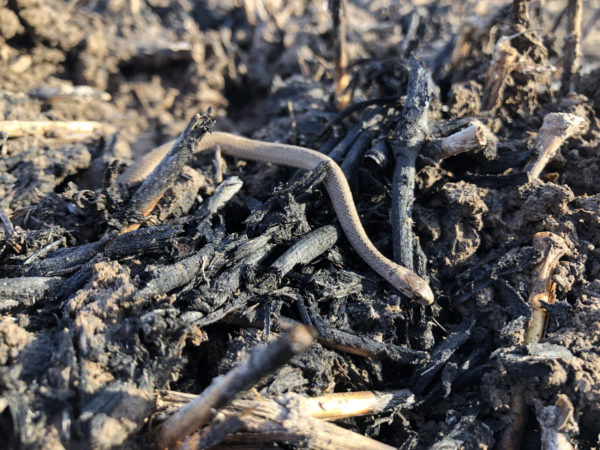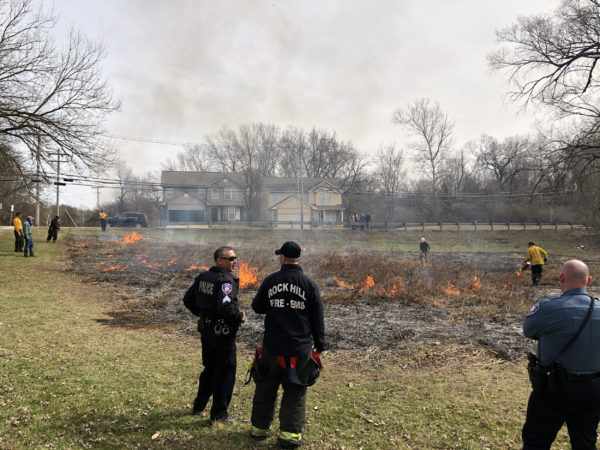While we had hoped to burn both the North and the Pasture Prairies on the traditional 2-year cycle, the MSD construction in the North Prairie limited our scope. Not even a week after the burn, temperatures were steadily in the 50–60s and overwintering wildlife had become very active and plants greening up. Be sure to see the picture below of a baby Dekay’s brown snake sunning itself on the freshly burned prairie!
Looking back over the past 30 years, our schedule for controlled burns has varied. When the prairies were first started by Bill Davit in 1989, they were burned annually to help control the invasive species that were competing with the native plants that were trying to get a foot in the door. Once the native plants were more established and could compete on their own, we changed the fire regimen. Starting with the 2004–05 season, we moved toward burning each prairie unit in alternating years, but this happened irregularly until five years ago. Looking ahead, we will most likely put each individual prairie on a 3-year burn cycle to allow for more refuge for overwintering insects.
During this same time period, I was in conversations with the Missouri Department of Conservation (MDC) to assist them in planning and implementing a controlled burn right down the road from LREC at Steger Elementary school before it got too warm. Their schoolyard prairie is a new venture supported by MDC and had not yet seen a prescribed fire in the three years since it began. MDC funded the prairie’s construction and initial maintenance, and put on a presentation for the whole school prior to the controlled burn about the importance of prairies and the need to burn them. Since it was right in the schoolyard, teachers and students were able to attend most of the burn, surrounding it from many vantage points. Adam Rembert and I were happy the timing worked out so we could share our controlled burn experience, as this fits into LREC’s goals of assisting schools in implementing outdoor based education. It was also a pleasure to work with the Webster Groves School District, MDC, Webster Groves Parks and Rec, and the Rock Hill Fire and Police Departments.





